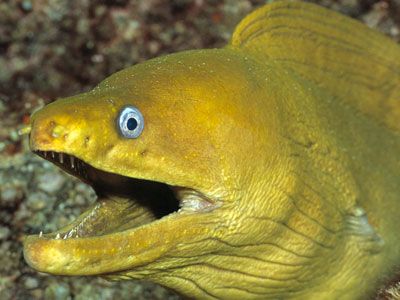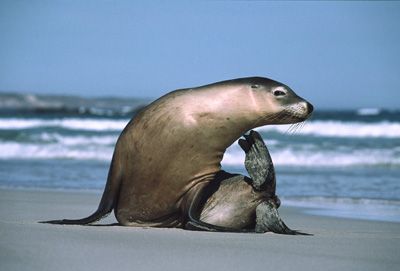
Sometimes you think you're having a bad day, and then you see the above photo of an endangered monk seal (Neomonachus schauinslandi) with an eel stuck in its nose, and you realize you're doing pretty OK.
The photo was taken by the National Oceanic and Atmospheric Administration, and according to NOAA's Hawaiian Monk Seal Research Program, this happens from time to time. Strangely enough, though NOAA has been monitoring the monk seal population in the northern islands of Hawaii for almost 40 years, this eel-in-the-nose problem has been observed a handful of times, but only since 2016.
Advertisement
But, why? Well, it's hard to say. Researchers have noted the trend seems to be in juvenile seals, and they've offered a few possible explanations. For starters, monk seals are ocean-bottom foragers — they like to root around for little animals to eat, flipping over rocks and shoving their faces into coral reefs where eels like to hide. When faced with the ferocious maw of a monk seal, an eel might decide in the heat of the moment to rush up the predator's nose to escape danger. Researchers also have suggested the seals may be eating the eels and then regurgitating them — only their lunch come up the wrong pipe. Which sounds ... painful.
But don't worry! When researchers see a monk seal with an eel dangling from its nostril, they capture the animal and gently remove it, and the seal goes on to live a freewheeling, eel-in-the-nose-free life. The eels, on the other hand, don't make it.
Monk seals are closely monitored in the Hawaiian islands because there are only around 1,400 individuals left, and researchers estimate about 30 percent of those animals are alive because of conservation efforts. Their numbers are dwindling due to things like hunting, entanglement in ocean trash and human interference with their habitat and food sources.
Advertisement

